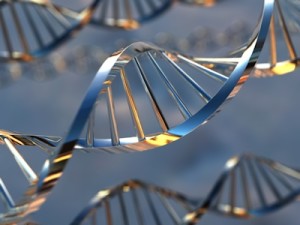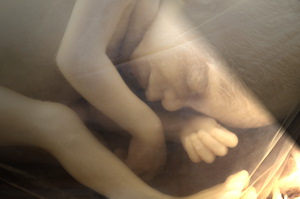Original Article liveactionnews.org/life-begins-at-conception-science-teaches/
Science teaches without reservation that life begins at conception. It is a scientific fact that an organism exists after conception that did not exist before conception. This new organism has its own DNA distinct from the mother and father, meaning that it is neither part of the mother nor part of father. As the embryo grows, it develops a heartbeat (22 days after conception), its own circulatory system, and its own organs. From conception it is a new organism that is alive and will continue to grow and develop as long as nutrition is provided and its life is not ended through violence or illness.

The offspring of two members of a species is always the same type of creature as the parents. No two dogs will ever conceive and give birth to a cat; no fish egg will ever produce a snake. According to all the laws of nature, the unborn baby is human.
Scientific textbooks proclaim this fact. Keith L. Moore’s The Developing Human: Clinically Oriented Embryology (7th edition, Philadelphia, PA: Saunders, 2003) states the following:
A zygote [fertilized egg] is the beginning of a new human being. Human development begins at fertilization, the process during which a male gamete … unites with a female gamete or oocyte … to form a single cell called a zygote. This highly specialized, totipotent cell marks the beginning of each of us as a unique individual.

The term “zygote” is a scientific term for the new life that is created when the sperm and the egg combine. “Oocyte” is another term for the egg cell, the cell released by woman’s ovary which travels down the fallopian tube and is fertilized by the male sperm.
The author of this scientific textbook, Keith L. Moore, is a world-renowned embryologist. He has written a number of definitive books on embryology, and his scientific knowledge and experience are vast and beyond reproach. Few medical students can complete their careers without studying from his textbooks.
Moore puts it even more plainly in Before We Are Born: Essentials of Embryology (7th edition, Philadelphia, PA: Saunders, 2008, p. 2):
[The zygote], formed by the union of an oocyte and a sperm, is the beginning of a new human being.Here is an example from another scientific work.
From Human Embryology & Teratology (Ronan R. O’Rahilly, Fabiola Muller [New York: Wiley-Liss, 1996], 5-55):
Fertilization is an important landmark because, under ordinary circumstances, a new, genetically distinct human organism is thereby formed[.]This third embryology textbook is as clear as the first two – fertilization is the beginning of new life and the start of a new, distinct human organism.
From T.W. Sadler, Langman’s Medical Embryology (10th edition, Philadelphia, PA: Lippincott Williams & Wilkins, 2006, p. 11):
Development begins with fertilization, the process by which the male gamete, the sperm, and the femal gamete, the oocyte, unite to give rise to a zygote.And in another source (Ronan O’Rahilly and Fabiola Miller, Human Embryology and Teratology [3rd edition, New York: Wiley-Liss, 2001, p. 8]):
Although life is a continuous process, fertilization … is a critical landmark because, under ordinary circumstances, a new genetically distinct human organism is formed when the chromosomes of the male and female pronuclei blend in the oocyte.In yet another textbook (William J. Larsen, Essentials of Human Embryology [New York: Churchill Livingstone, 1998, pp. 1, 14]), we read the following: .
Human embryos begin development following the fusion of definitive male and female gametes during fertilization[.] … This moment of zygote formation may be taken as the beginning or zero time point of embryonic development.As we can see, embryology textbooks are unanimous: life begins at fertilization. And the life that begins is not simply a continuation of the life of the sperm or egg cell. Rather, it is the life of a distinct, unique, new individual which has never existed before in history and will never exist again. Nothing will be added to the new organism except nutrition, and it will continue to grow and develop until death occurs due to injury or illness.
Lennart Nilsson was a photographer who took the first pictures of unborn embryos and fetuses and made them available in his famous book A Child is Born. In the introduction to this book, which contains beautiful full-color pictures of unborn babies in different stages of development, he says:
… but the whole story does not begin with delivery. The baby has existed for months before – at first signaling its presence only with small outer signs, later on as a somewhat foreign little being which has been growing and gradually affecting the lives of those close by[.]This incredible book shows gorgeous photographs of the unborn baby from conception to birth. We see the shape of the six-week-old embryo begin to resemble the profile of the baby who will be born. We see the tiny, fully formed fingers of an eight-week-old unborn baby. It is a remarkable book that many expectant mothers have seen, and its photographs have been reproduced many times.
The word “embryo” is defined as such (Considine, Douglas [ed.], Van Nostrand’s Scientific Encyclopedia, 5th edition, New York: Van Nostrand Reinhold Company, 1976, p. 943):
Embryo: The developing individual between the union of the germ cells and the completion of the organs which characterize its body when it becomes a separate organism. … At the moment the sperm cell of the human male meets the ovum of the female and the union results in a fertilized ovum (zygote), a new life has begun[.]And yet another textbook (Carlson, Bruce M. Patten’s Foundations of Embryology, 6th edition, New York: McGraw-Hill, 1996, p. 3) states:
Almost all higher animals start their lives from a single cell, the fertilized ovum (zygote)[.] … The time of fertilization represents the starting point in the life history, or ontogeny, of the individual.This is a mere handful of excerpts from medical textbooks. In fact, try as you might, you will never find a book on genetics or embryology that does not state that life begins at conception.
National Geographic put together a television program (“In the Womb,” 2005) documenting the development of the baby throughout pregnancy. In the introduction of their program, they sum up the scientific knowledge of the beginning of life in the following way:
The two cells gradually and gracefully become one. This is the moment of conception, when an individual’s unique set of DNA is created, a human signature that never existed before and will never be repeated.In 1981 (April 23-24), a Senate Judiciary Subcommittee held hearings on the question of when human life begins. Appearing to speak on behalf of the scientific community was a group of internationally known geneticists and biologists who had the same story to tell – namely, that human life begins at conception – and they told their story with a complete absence of opposing testimony (Subcommittee on Separation of Powers to Senate Judiciary Committee S-158, Report, 97th Congress, 1st Session, 1981).
*** Dr. Micheline M. Mathews-Roth, Harvard Medical School, gave confirming testimony, supported by references from over 20 embryology and other medical textbooks that human life began at conception.
It is incorrect to say that biological data cannot be decisive…It is scientifically correct to say that an individual human life begins at conception.*** “Father of Modern Genetics” Dr. Jerome Lejeune told the lawmakers:
To accept the fact that after fertilization has taken place a new human has come into being is no longer a matter of taste or opinion … it is plain experimental evidence. Each individual has a very neat beginning, at conception.*** Dr. McCarthy de Mere, medical doctor and law professor, University of Tennessee, testified:
The exact moment of the beginning of personhood and of the human body is at the moment of conception.*** Dr. Alfred Bongiovanni, professor of Pediatrics and Obstetrics, University of Pennsylvania School of Medicine, concluded:
I am no more prepared to say that these early stages represent an incomplete human being than I would be to say that the child prior to the dramatic effects of puberty … is not a human being. … I have learned from my earliest medical education that human life begins at the time of conception.***Dr. Richard V. Jaynes:
To say that the beginning of human life cannot be determined scientifically is utterly ridiculous.***Dr. Landrum Shettles, sometimes called the “Father of In Vitro Fertilization,” notes:
Conception confers life and makes that life one of a kind.And on the Supreme Court ruling Roe v. Wade,
To deny a truth [about when life begins] should not be made a basis for legalizing abortion.*** Professor Eugene Diamond stated:
… either the justices were fed a backwoods biology or they were pretending ignorance about a scientific certainty.***Gordon, Hymie, M.D., FRCP, chairman of medical genetics, Mayo Clinic, Rochester:
By all criteria of modern molecular biology,life is present from the moment of conception. … Science has a very simple conception of man; as soon as he has been conceived, a man is a man.*** C. Christopher Hook, M.D. Oncologist, Mayo Clinic, Director of Ethics Education, Mayo Graduate School of Medicine:
When fertilization is complete, a unique genetic human entity exists.The official Senate report reached this conclusion:
Physicians, biologists, and other scientists agree that conception marks the beginning of the life of a human being – a being that is alive and is a member of the human species. There is overwhelming agreement on this point in countless medical, biological, and scientific writings.
 Unborn
babies are among the most vulnerable and helpless members of our
society. Science declares that they are human beings with inherent
value. The value of human beings is not dependent on where they are, how
tall they are, what race they are, what they look like, or how old they
are. Each person has inherent worth because of who and what he or she is: a member of the human species.
Unborn
babies are among the most vulnerable and helpless members of our
society. Science declares that they are human beings with inherent
value. The value of human beings is not dependent on where they are, how
tall they are, what race they are, what they look like, or how old they
are. Each person has inherent worth because of who and what he or she is: a member of the human species.

